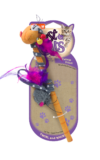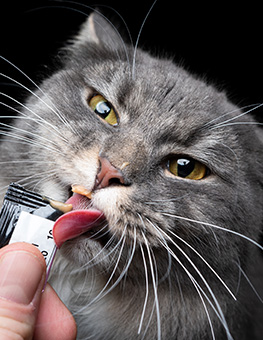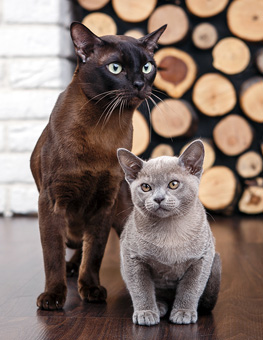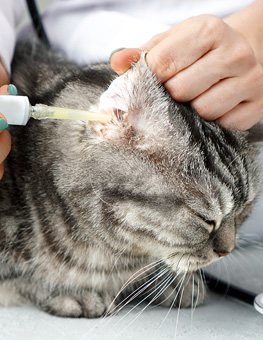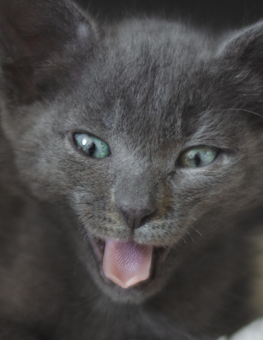Petting Aggression: How to Handle a Cat that Bites When Petted
You’re sitting on your couch after a long day, enjoying one of your favorite shows on TV. Your cat hops up next to you, or maybe even gets in your lap. Paying attention to the TV, you absentmindedly begin to pet your cat. Suddenly, ouch! You’ve been bitten!


Cats don’t always want to be touched and will demand that you stop by biting or scratching.
What happened? You thought you were having a nice time together. Why do cats sometimes bite you when you pet them?
Understanding Pet Aggression in Cats
Petting aggression, sometimes referred to as overstimulation, is all too common among indoor cats. It includes cats who become upset or irritated after any type of handling. It could be petting, it could be picking up, or it could be when brushing your cat. Often, biting and scratching appears to come up suddenly and without warning, and you aren’t sure what even happened. Of course, this is upsetting to many cat owners and damages the bond between human and cat significantly. Petting aggression is one of the least understood forms of aggression amongst cat owners. The good news is that it's one of the most easily managed.
As humans, we love to pet animals. We see something small and furry and feel an irresistible desire to touch them. Especially with our own animals, we want to show them affection and bond with them. Often, petting is the best way we know how. It hurts – both physically and emotionally –when your cat swats your hand away and hisses. However, we don’t often consider that . And that’s okay! You don’t always want to be touched either, even by people you know and love.
Imagine that a loved one is tickling you. At first, it’s fun, and everyone is laughing and having a good time. But it goes on, and on, and on, until suddenly, you aren’t having fun anymore. When this happens, you ask them to stop. What if they don’t? Would you smack their hand away? Maybe lash out verbally? It’s similar with cats. Often, cat owners are uneducated as to their cat’s subtle body language and signals that he is no longer enjoying the interaction. At first, he is enjoying the petting; then, suddenly, he no longer is. Maybe his tail swish or his ears going back were ignored, so now he feels that he must demand that you stop, rather than simply ask.
Managing Your Cat's Behavior
If your cat bites you when you pet him, don’t worry. There are many ways to manage his behavior:


Test if your cat wants to be petted and respect his wishes if he doesn't.
- Consent testing is an excellent way to ask your cat if he wants to be petted. Hold your hand out an inch or two from his head. Does he close the gap and lean into your hand? If so, then you know for sure that he would like to be petted. Hold your hand fairly still and allow him to control the interaction. He will guide your hand to the parts of his head or body that he’d like to have touched. If you have a cat who is particularly prone to petting aggression, stop petting him every few seconds and allow him to re-initiate on his terms. If he does not initiate, respect his wishes and do not pet him.
- Learn to read your cat’s body language and recognize subtle signs of irritation and discomfort. Although there are always exceptions, more often than not, biting does not come out of nowhere. The cat will likely start out with small signals, like his ears going back, his tail swishing, or his body tensing up. If these are ignored, he has to say it a little louder – in the form of a hiss, swat, or bite. To avoid being bitten, try not to pet a cat prone to overstimulation unless he has your full attention. This way, you’ll be able to see clearly when you need to stop.
- A good rule of thumb is to stick to petting your cat on the head. Full body strokes and petting in other areas are sometimes not tolerated by particularly sensitive kitties. If you have two cats who are very friendly with each other, you may notice that they will groom each other. Almost always, they’ll groom each other’s face and head. Mimic that natural cat behavior by following suit!
- You can use desensitization and counter-conditioning to teach your cat to enjoy petting. Pet him for one second, then give him a treat. Then two seconds, the three seconds, and more! If your cat learns that every time you pet him, a delicious snack will follow, he may start looking forward to petting time! Delectables Squeeze-Ups™ are great to use for this, since they are designed for you to feed your cat directly from the tube, helping to promote a bond between cat and human.
- If your cat just doesn’t like petting or being held, then that’s okay. There are lots of other ways to bond with him! Trick training, teaching him to walk on a harness and leash, and playing with toys are all great ways to spend time with your cat and bond together!
As always, if you are struggling with any type of aggression in your cat, it’s important to rule out any medical cause with your veterinarian. In some cases, the help of a cat behavior consultant may be necessary as well.




